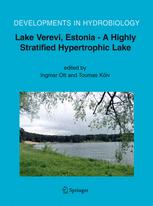

Most ebook files are in PDF format, so you can easily read them using various software such as Foxit Reader or directly on the Google Chrome browser.
Some ebook files are released by publishers in other formats such as .awz, .mobi, .epub, .fb2, etc. You may need to install specific software to read these formats on mobile/PC, such as Calibre.
Please read the tutorial at this link: https://ebookbell.com/faq
We offer FREE conversion to the popular formats you request; however, this may take some time. Therefore, right after payment, please email us, and we will try to provide the service as quickly as possible.
For some exceptional file formats or broken links (if any), please refrain from opening any disputes. Instead, email us first, and we will try to assist within a maximum of 6 hours.
EbookBell Team

4.8
14 reviewsThe present book summarises investigations on Lake Verevi (surface 12.6 ha, mean depth 3.6 m), located in the Estonian town of Elva, initiated since 1929. The seventeen articles in this issue deal with a wide range of questions, starting with a holistic overview of the ecological status, over assessments of long-term changes in biotic and abiotic conditions and finishing with proposed restoration plans. Abiotic chapters provide calculations on water and mass balance, distribution and fractions of phosphorus in the sediment, optical properties and penetration of radiation in the water column, sedimentation rate during the formation of stratification, and nitrogen circulation characteristics. All of these phenomena explain the special environmental features of this highly stratified lake. Long-term changes, seasonal development, primary production and resource ratios inducing the distribution of species composition of various biota (bacterio-, phyto and zooplankton, macrozoobenthos, fish) are discussed. The most important issues in this book are long-term investigations on a complex ecosystem, the phenomenon of partial meromixis, the description of restoration methods, and the existence of narrow microniches for plankton in the water column.
The book aims at a large audience, including researchers and students of complex limnological questions and of intricate ecological systems, but also to managers and decision makers. The present volume firmly establishes Lake Verevi as a model system of a natural aquatic habitat, experiencing a multitude of anthropogenic pressures, but for which restoration plans aim to provide sustainable management in the future.
Reprinted from Hydrobiologia volume 547 (2005)